Exhibitions and displays
On-site exhibitions and displays provide opportunities for researchers to work with the multiple award-winning public and community engagement teams within Oxford University Gardens, Libraries and Museums (GLAM) institutions.
Exhibitions and displays can allow research to be presented in innovative ways, alongside objects from GLAM collections, loans from external organisations and interactive displays. Exhibitions usually have programming around them such as talks, tours and other events, allowing for other forms of engagement alongside the exhibition.
Larger exhibitions are usually but not always conceptualised in-house, and often involve working in collaboration with partners external to the GLAM institution in question. It is therefore advisable to contact with the relevant team at the institution at the earliest possible convenience.
A useful blog post about the logistics of putting on an exhibition in the History of Science Museum’s Special Exhibition Space illustrates how creating and curating a special exhibition can be a complex, varied and often long process.
Planning can be as long as five years in advance for exhibitions at GLAM institutions and costs can vary from a few thousand pounds to tens of thousands of pounds. Please be aware that GLAM venues have full and busy programmes and it may not be possible to pick up activities that have already been fully developed or to deal with urgent requests. Ideally, activities should be co-created with GLAM from project conception and researchers should get in contact early so that we can work together to develop your ideas. Please note that while researchers may contact GLAM departments directly they are also encouraged to contact departmental/Divisional PCER facilitators for interim support/guidance.

GLAM PCER Toolkit | Getting started |
| Opportunities by category | Opportunities by institution | Case studies |
(Please note that opportunities are subject to change)
- Exhibitions often involve significant costs (tens of thousands of pounds to hundreds of thousands) due to the amount of professional expertise and resources required internally and externally to the GLAM institutions
- Audiences for exhibitions and displays are large and diverse
- Displays often act as foundations for other types of public and community engagement activity and can lead to the development of a variety of different types of resources. Displays and exhibitions can also form useful springboards for further research
- There is a range of different options for special exhibitions and displays at GLAM institutions ranging from small-scale displays to large-scale exhibitions
- Exhibitions alone rarely create two-way dialogue or interaction between the researcher and the public
- Lead time for recruitment, training and induction for volunteers needs to be considered
Planning can be as long as five years in advance for exhibitions at GLAM institutions and costs can vary from several thousand pounds to hundreds of thousands of pounds.
It is advisable to contact the relevant exhibitions specialist at the institution at the earliest possible convenience to discuss the possibilities.
- Curatorial time – although may be given ‘in-kind’. See section on How much will the PCER activity cost? in the GLAM PCER Toolkit for further details
- Display costs, e.g. exhibition materials, plinths, lighting, AV/interactives, signage, mounting, framing
- Technical installation
- Marketing, e.g. print costs, advertising, press/PR
- Object hire/loan costs, e.g. hire, transportation, insurance
- In-gallery staffing, e.g. security, tour guides
- Hospitality costs
- Evaluation costs, e.g. Evaluation Officer time, survey costs (tablet or paper surveys), volunteer costs
Note that this is not an exhaustive list and that these types of activities may incur costs not listed here.
Please contact the relevant team to discuss costs as soon as possible.
Examples (in alphabetical order by GLAM institution)
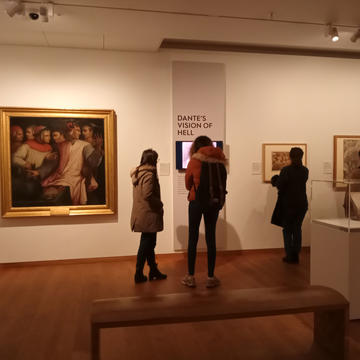
Temporary exhibitions at the Ashmolean Museum
Ashmolean Museum
The Ashmolean Museum contains a number of galleries and display cases which could allow for (small-scale) exhibitions for public engagement with research.
Approx. costs: Costs can be variable and different funding models are possible. Please note, exhibition programmes at the Ashmolean have substantial lead times (2-5 years depending on the scale). Discussions must happen at a very early stage of a research project’s conception.
Ashmolean PCER projects are currently being updated. Examples and opportunities are subject to change.
Contact: PER Coordinator, Zoe Bampton (zoe.bampton@ashmus.ox.ac.uk)
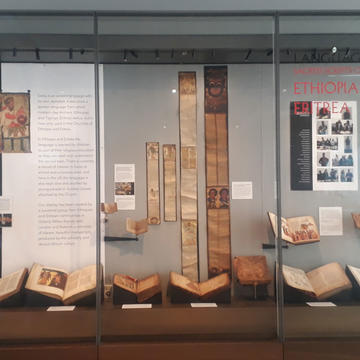
Temporary exhibition in Blackwell Hall display case and in the entrance to Old Library
Bodleian Libraries
A single display case in Blackwell Hall and another in the entrance to the Old Library host small temporary exhibitions (8-10 weeks). These are conceived as highly visible insights into University research and Bodleian collections.
Researchers can develop proposals which are agreed 6-18 months in advance and delivered in collaboration with Bodleian exhibition and curatorial teams.
Approx. costs: Basic non-staff costs for a small display are c. £500. Support may be available
Example: Alice in Typhoidland (a collaboration which involved the Bodleian and HSM)
Further examples/information: Past exhibitions online webpage
Contact: Exhibition team (exhibitions@bodleian.ox.ac.uk)
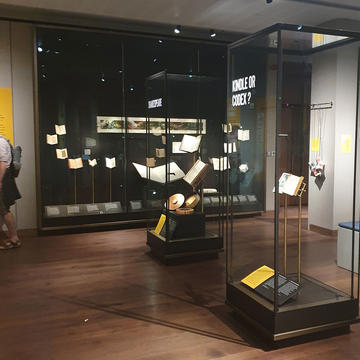
Temporary exhibition in ST Lee Gallery
Bodleian Libraries
A large exhibition space in the Weston Library which hosts large-scale exhibitions on themes which will resonate with our audiences. Exhibitions unite research interests with the Bodleian’s rich & diverse collections to create visual & thought-provoking projects. Exhibitions may be accompanied by a Bodleian publication and may support a wider public engagement programme. Temporary exhibition projects require substantial time commitments from the curatorial team and take 2-3 years planning and delivery.
Approx. costs: Costs can be variable and different funding models are possible
Example: Sensational Books
Further examples/information: Past exhibitions online webpage
Contact: Exhibition team (exhibitions@bodleian.ox.ac.uk)
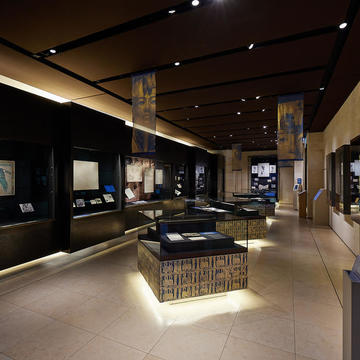
Temporary exhibition in Treasury
Bodleian Libraries
A medium-sized exhibition space in the Weston Library which hosts major themed/research-focused exhibitions up to 12 months in duration. Most of the Bodleian’s exhibitions are curated by researchers from Oxford or the UK academic community. Planning takes 2-3 years on average and requires substantial input from the researcher/curator/curatorial team. Broad themes are encouraged, which can be strongly supported by Bodleian collections.
Approx. costs: Costs can be variable and different funding models are possible
Example: Tutankhamun: Excavating the Archive
Further examples/information: Past exhibitions online webpage
Contact: Exhibition team (exhibitions@bodleian.ox.ac.uk)
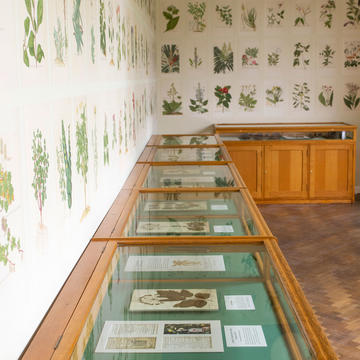
Temporary exhibition in Herbarium or Conservatory
Oxford Botanic Garden and Arboretum
As well as the external environments of the Garden and Arboretum, OBGA has events and exhibition space in the Conservatory and Herbarium Room/Exhibition Room at the Garden and the woodland barn at the Arboretum.
Researchers could potentially (co-)curate a display.
Example: Thinking 3D: Flower to Frame
Further information: Herbarium Room webpage | Conservatory webpage
Contact: Events team (events@obg.ox.ac.uk)
Contemporary Science and Society exhibitions
Oxford University Museum of Natural History
The Contemporary Science & Society exhibition series explores current science advances and policy issues associated with them, linking contemporary research with the Museum’s audiences.
Researcher involvement in existing projects is usually coordinated via projects and departments and the museum has a formal submissions process for proposals. Timescales are variable.
Approx. costs: Exhibitions are large-scale projects which require substantial resources and planning time; ideas and proposals should be discussed with the team for bespoke costing
Example: Bacterial World
Further examples/information: Public engagement with research webpage
Contact: Exhibitions team (ellena.grillo@oum.ox.ac.uk)
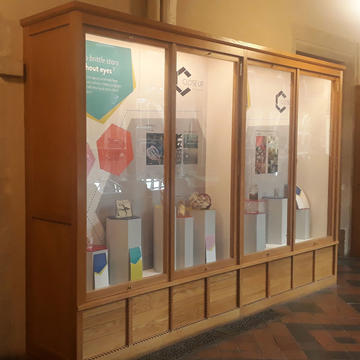
Oxford University Museum of Natural History
Small research displays showcase current research from Oxford University to demonstrate how scientific research is enhancing our understanding of the natural world. Displays can also include scientific visualisations and specimens from the museum collections.
Researchers work with the Museum to present content in a way that is clear & accessible to the general public. The museum has a formal submissions process for proposals. Timescales are variable.
Approx. costs: Research displays can cost c. £5,000 but costs are variable and depend on the scope of the researcher’s ambition
Examples/information: Past displays webpage
Contact: Exhibitions team (ellena.grillo@oum.ox.ac.uk)

Oxford University Museum of Natural History
There are a variety of flexible displays within the museum whose content changes regularly. Single-case displays – including the Presenting Case & the Community Case – are often used to share and showcase the results of projects/partnerships running at the museum.
Researcher involvement in existing projects is usually coordinated via departments. The Museum has a formal submissions process for proposals. Timescales are variable.
Approx. costs: Costs vary depending on scale and scope, and are usually budgeted within projects
Examples/information: Past displays webpage
Contact: Exhibitions team (ellena.grillo@oum.ox.ac.uk)
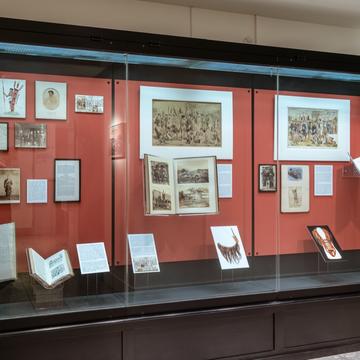
Temporary exhibition in Archive Case
Pitt Rivers Museum
The Archive Case is on the First Floor of the Museum and is used for temporary displays, usually two per year (June-November and December-May).
Researchers work with the Museum to present content in a way that is clear and accessible to the general public.
Approx. costs: c. £2,000 but costs are variable
Example: Surveying the Nagas
Further examples/information: Past exhibitions webpage
Contact the museum for more information (prm@prm.ox.ac.uk)
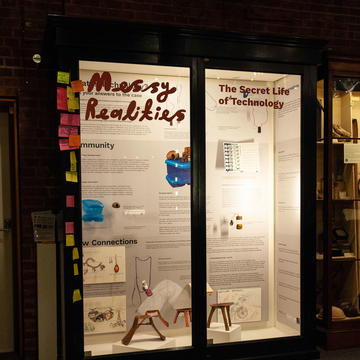
Temporary exhibition in Didcot Case
Pitt Rivers Museum
The Didcot case is in the Lower Gallery and is used for temporary displays, usually two per year (March-August and September-February).
Researchers work with the Museum to present content in a way that is clear and accessible to the general public.
Approx. costs: c. £2,500 but costs are variable
Example: Messy Realities: The Secret Life of Technology
Further examples/information: Past exhibitions webpage
Contact the museum for more information (prm@prm.ox.ac.uk)
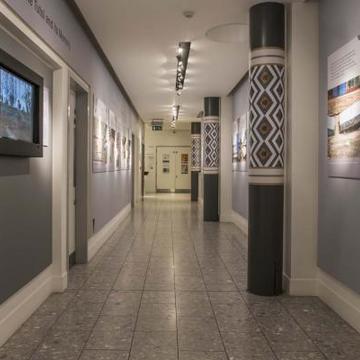
Temporary exhibition in Long Gallery
Pitt Rivers Museum
The Long Gallery is a medium-size exhibition space for temporary exhibitions on the ground floor of the Museum extension, usually two per year (May-October and November-April).
Researchers work with the Museum to present content in a way that is clear and accessible to the general public.
Approx. costs: c. £5,000 but costs are variable (this £5k does not incl. evaluation costs)
Example: Kwibuka Rwanda
Further examples/information: Past exhibitions webpage
Contact the museum for more information (prm@prm.ox.ac.uk)

Temporary exhibition in Special Exhibition Space
Pitt Rivers Museum
The Special Exhibition Space at the Pitt Rivers Museum is a large space for major temporary exhibitions, up to one year in duration (usually early February to the beginning of January).
Planning can be many years in duration – researchers should contact the team to discuss.
Approx. costs: Costs can be variable so contact the relevant team to discuss
Example: Lande: The Calais ‘Jungle’ and Beyond
Further examples/information: Past exhibitions webpage
Contact the museum for more information (prm@prm.ox.ac.uk)




